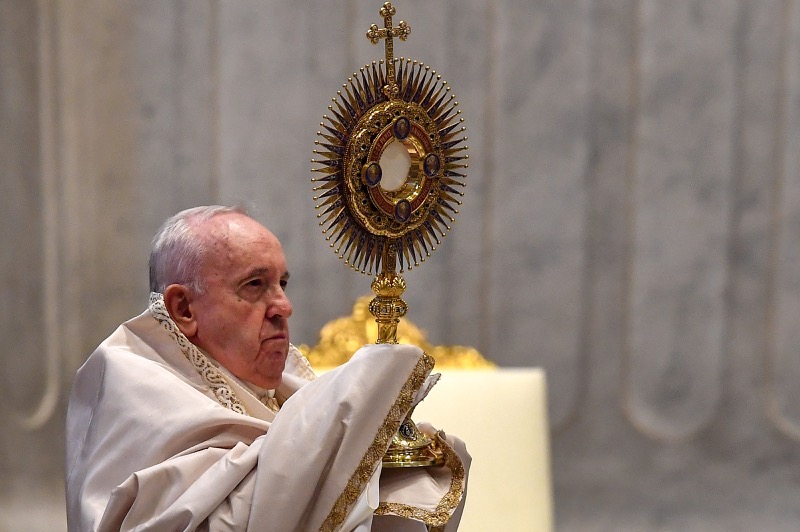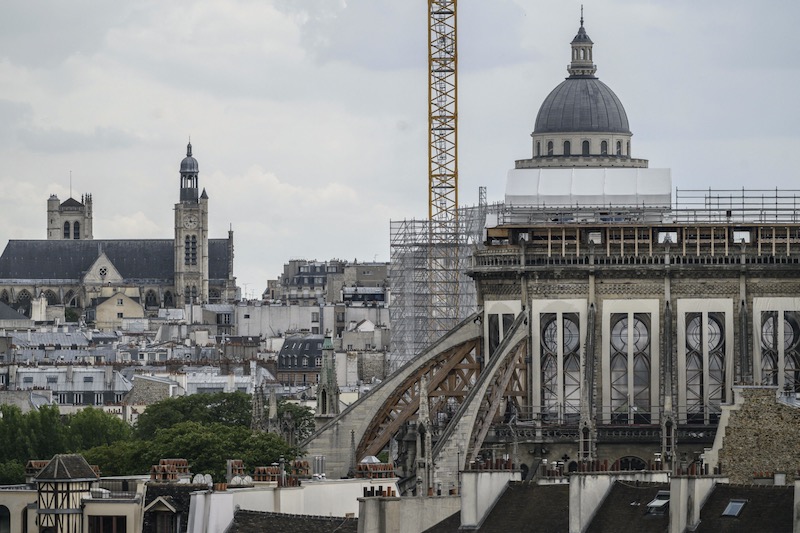Workers have begun removing the tangled mass of damaged scaffolding on top of Notre Dame cathedral, the most delicate part of the reconstruction of France's most famous church after its tragic fire last year.
The 200-ton square structure of pipes was installed around the cathedral's rooftop spire in a renovation plan that led to the accidental fire in April 2019, which burned away the spire and roof and spewed toxic lead poisoning throughout the building and around the surrounding neighbourhood.
Partly melted in the fire, the scaffolding stablised the gothic cathedral after the falling spire tore a gaping hole in the transept vault that helped hold the walls in place. Workers first had to shore up the walls and windows with wooden supports against possible collapse before attempting to remove the tangled metal.
Specialist workers will be lowered down on ropes into the jumbled structure to cut away pipes melted together by the heat of the blaze. Once freed from its post-fire position, the structure will have to be gently lifted away by a towering crane.
“It's the last check-up before open-heart surgery,” Christophe-Charles Rousselot of the Notre Dame Foundation, which collects donations for the restoration, told Reuters. “The rope workers will swing from tube to tube to cut up the scaffolding. ... It is an extremely complicated, very delicate operation that has been prepared for months.”
The work should take all summer to complete. French officials have not yet decided whether to rebuild the spire as it was or opt for something more modern, as President Emmanuel Macron has suggested.
The goal of reopening the cathedral by 2024, when Paris hosts the Summer Olympics, remains unchanged despite several setbacks the timetable has already suffered. Work was temporarily suspended last summer to clean up lead pollution, last winter to sit out some storms and this spring for the coronavirus lockdown.
Olivier Latry, one of the cathedral’s three chief organists, said it could take up to four years just to disassemble, clean and rebuild the grand organ, which survived the fire. “The pipes could have melted in the blaze, but they only got filled with lead dust,” he said.
The square in front of the cathedral has mostly reopened to the public after lead poisoning there required extensive cleaning. Access to the building’s statue-studded western facade remains blocked by fences around a few temporary buildings for workers and their equipment.



 Loading ...
Loading ...